What are the features that make for the best G-Sync monitors, the leading FreeSync gaming monitors, and the top G-Sync compatible FreeSync monitors? For starters, the compatible monitors should offer very specific compatibility with Nvidia GPU chipsets, even though they aren’t native G-Sync monitors. These FreeSync monitors have been tested specifically by Nvidia to ensure they are compatible with Nvidia’s G-Sync technology. We recommend learning about these refresh rate technology terms first if they seem unfamiliar to you, like you’re wondering what is FreeSync or G-Sync.
On top of that specific compatibility, these gaming monitors should offer a high level of image quality and performance. You should consider a monitor with a high native resolution, fast response time, low input lag, and excellent color accuracy. With these specifications, these gaming monitors create a more immersive gaming experience overall.
The best G-Sync compatible monitor should also offer all the standard features you expect from a high-quality computer display. Look for a wide range of connectivity options, adjustable brightness levels, and ergonomic positioning options.
Keep reading to learn more about the best G-Sync compatible FreeSync monitors and how you can find the best one to elevate your gaming experience.
Top G Sync Compatible FreeSync Monitors
#1 Phillips 276E9QDSB 27” Monitor
Award: TOP PICK
WHY WE LIKE IT: This blazing fast monitor features an IPS panel for wide viewing angles and an ultra-thin border for a seamless multi-monitor display. Additionally, the Ultra Wide-Color technology delivers vivid images while offering eye protection features like blue light filtration and flicker reduction. It’s definitely stronger than the Acer Nitro VG271U FreeSync gaming monitor.
- Crystal-clear display with a wide color gamut
- Great refresh rate
- Multiple eye protection features
- Some users report mounting issues
- No built-in speakers
The Phillips 276E9QDSB 27” Frameless monitor is a Full HD IPS display with a wide color gamut and fantastic color accuracy, and the thin border results in an engaging and immersive display that is seamless in a multi-monitor setup. Additionally, the included eye protection features can help with eye strain during long hours at work. While the 5 ms response time isn’t great for competitive gaming, the 75Hz refresh rate delivers a smooth image across movies and single-player games.
Meanwhile, a 1ms monitor is the best for competitive gaming, which you’ll learn more about in our AOC G2460PF G-Sync review.
Equipped with AMD FreeSync tech, the Phillips 276E9QDSB 27” Frameless monitor corrects dropped frames and delivers a smooth gaming image. In addition, the FreeSync feature removes artifacts, so you can enjoy crystal clear images, regardless of the framerate. Lastly, the multiple video ports and inputs support both modern HDMI devices and legacy VGA hardware. While there aren’t any built-in speakers, this monitor features a 3.5mm jack for audio out so you can enjoy disturbance-free game audio and music.
#2 LG 27GN800-B 27” UltraGear Monitor
Award: HONORABLE MENTION
WHY WE LIKE IT: This monitor is a fantastic choice for high-fidelity gaming with top-tier responsiveness and a 1440p resolution. In addition, this monitor features multiple software tools to keep your gameplay smooth, even at variable frame rates.
- Incredibly responsive
- Crisp resolution
- 1ms response time
- Subpar HDR quality
The LG 27GN800-B Ultragear Gaming 27” monitor is a stylish choice for the productive gamer. This 1440p QHD IPS panel features a 144Hz refresh rate and a 1ms response time that’s ideal for the competitive gamer. The support for both Gsync and FreeSync ensures that you’ll get a smooth-moving image, regardless of your computer hardware. In addition, the color accuracy and display customization make this a great monitor for creatives and video professionals. That said, the HDR support leaves a bit to be desired.
If you enjoy a fully immersive experience, this monitor features audio-out via a 3.5mm jack to link to a soundbar or headphones. In addition, the LG Ultragear includes two HDMI ports and a single DisplayPort connection. Lastly, this unit features a multitude of image settings like Black Stabilizer, Motion Blur Reduction, and Dynamic Action Sync to deliver a brilliant gaming experience that’s free from visual noise. Additionally, features like flicker reduction and Reader Mode offer eye protection for long hours of productive use.
#3 Dell S2721HGF 27” Monitor
Award: BEST FOR GAMING
WHY WE LIKE IT: This fast curved gaming monitor provides a wide field of view to spot the competition. Additionally, features like dark stabilization and ultra-low response times make the most of this Full HD display.
- Super immersive curved display
- 144Hz refresh rate
- OSD menus to fine-tune each experience
- HDMI ports are only HDMI 1.4
The Dell S2721HGF is a 27-inch curved FHD monitor with support for both AMD FreeSync and Nvidia G-Sync. The 1500R curve offers an enhanced field of view for a vibrant and immersive gameplay experience at up to 144 frames per second. Combined with the high refresh rate, the Dell S2721HGF has a 1ms Moving Picture Response Time (MPRT) for lag-free gaming sessions. While the ports on the back only offer HDMI 1.4, most modern computers and consoles work well with all generations of HDMI technology.
This Dell monitor gives users a ton of customization and tools that are ideal for gaming. Equipped with a joystick and shortcut buttons, users get enhanced control over the S2721HGF and features like an FPS counter and darkness stabilizer. In addition, this monitor is great over long gaming sessions with ComfortView software and flicker control to mitigate eye strain. Combined with height and tilt adjustment, the sleek vents keep the monitor cool during the most visually demanding gameplay moments.
#4 Asus TUF VG247Q1A 23.8” Monitor
Award: BEST FOR CONSOLES
WHY WE LIKE IT: This gaming monitor is built with calibration in mind, and it can enhance underpowered hardware with advanced image optimization features to bring out fine details. In addition, this unit offers eye protection and multiple connectivity options.
- Incredible refresh rates
- Extreme Low Motion Blur technology for 1ms response times
- Supports 120Hz output for PS5 and Xbox Series X/S
- Some preset image settings won’t deliver the best picture
The Asus TUF VG247Q1A is a 23.8” 1080p monitor with a super-high 165Hz refresh rate to keep you up to speed with the competition. The Asus Extreme Low Motion Blur (ELMB) technology keeps the response time to a blazing 1ms while eliminating unwanted image ghosting. In addition, the Asus TUF offers features like Shadow Boost and GameVisual to enhance your PC or console’s visuals to deliver a crisp image even during high-paced action. That said, you may need to adjust some of the monitor’s presets to get the best picture.
With multiple HDMI 1.4 ports and a 3.5mm audio jack, you can quickly switch between multiple video sources without ruining your cable maintenance. While some users report needing to calibrate this monitor from game to game, the Asus GamePlus hotkeys allow you to cycle through various presets so you can quickly optimize your experience. Lastly, the form factor and monitor size make this a perfect choice for a multi-monitor setup.
#5 Acer XFA240 bmjdpr 24” Monitor
Award: BEST FOR SMALL DESKS
WHY WE LIKE IT: Other than the thin red line on the monitor’s base, this is a fantastic gaming-capable monitor with a minimalist design. The small base and modest display make this a solid choice for users with a small desk or corner gamer setup.
- Feature-rich and customizable
- Fully adjustable ErgoStand with a 90 degree pivot
- Perfect size for multiple monitors or a small setup
- The TN panel isn’t great for color accuracy
The Acer XFA240 24” is a Full HD monitor that supports up to 144 frames per second with a response time of 1ms. This makes for smooth gameplay that’s bolstered by the monitor’s ability to utilize both AMD FreeSync and Nvidia G-Sync. In addition, the Acer offers two built-in speakers, which other brands tend to skip. While the monitor’s TN panel doesn’t offer the vibrant colors of a premium model, there are few better options for a budget gaming monitor.
Thanks to Acer VisionCare, the Acer XFA240 minimizes eye strain from multiple hours of gaming or working. In addition, the ErgoStand allows you to adjust the monitor’s height, tilt, and pivot the display up to 90 degrees to help mitigate neck and back issues. The XFA240’s design is almost minimalist compared to other gaming monitor options, and the small base allows it to fit on most desks or serve in a multi-monitor setup.
#6 ViewSonic OMNI XG2705 27” Monitor
Award: BEST FOR MULTIPLE VIEWERS
WHY WE LIKE IT: The wide viewing angles and high refresh rate make this monitor a great pick for local multiplayer or watching a movie with friends. In addition, the multiple input methods are ideal for quickly switching between devices for work or play.
- Wide viewing angles
- 1ms (MPRT) response time
- Vibrant IPS display
- Quiet speakers
The ViewSonic XG2705 27” monitor is a solid choice for users looking to gather friends or family for a spontaneous gaming or movie session. The SuperClear IPS display delivers vivid colors at wide viewing angles that account for many seating arrangements. That said, competitive gamers will appreciate the 1ms response time and blazing 144Hz refresh rate for a silky online match. While the built-in speakers aren’t very loud, the 3.5mm jack should work with headphones or external speakers.
For users looking to work, the ViewSonic XG2705 monitor’s plain black plastic will blend into most office settings, and the eye protection features help reduce eye strain over a long day. In addition, the height adjustment, tilt, and vertically pivoting base will suit itself to a standing or seated desk without straining your neck. Lastly, the 3-side borderless mold matches makes for a seamless multi-monitor setup for streamers or those looking to enhance their productivity.
Beginner’s Guide to G-Sync Compatible FreeSync Monitors
What Are G-Sync Compatible FreeSync Monitors?
A G-Sync compatible FreeSync monitor may sound like a mouthful, but it’s a very specific type of gaming monitor made for more seamless compatibility with your gaming PC. Before the advent of FreeSync monitors, you were required to use a native Nvidia G-Sync monitor with your Nvidia graphics card to match your monitor’s refresh rate with your GPU’s frame rate.
Now, with G-Sync compatible FreeSync monitors, you can simply purchase a FreeSync model and save yourself some money. A compatible FreeSync monitor features the Nvidia control panel to enable compatibility between your monitor and GPU.
In the end, a G-Sync compatible display gives you a seamless gaming experience, no matter what graphics card chipset you’re using in your gaming PC.
G-Sync Compatible FreeSync Monitors vs. Traditional Monitors
As you may have come to expect, these monitors operate the same way as a traditional monitor, in the sense that they both display visual data from your computer. You connect the two devices together with a display cable, and they should work like a charm.
However, FreeSync monitors with compatibility for Nvidia’s G-Sync technology offer one major difference: variable refresh rates. This is a feature specific to gaming monitors as a whole, and it is not something you’ll find in your standard office monitor. They are also the same size as standard monitors, which means you will have to get the best VA monitor if you want a wider viewing field.
How G-Sync Compatible FreeSync Monitors Work
Like any other computer monitor, a 32-inch gaming monitor plugs directly into your computer or gaming console using an HDMI cable, USB-C cable, DisplayPort cable, or VGA cable. Once the two devices are connected, the monitor receives visual data from your computer and displays it on the screen for you to see.
When it comes to your monitor’s adaptive sync functionality, it’s important to understand your computer’s GPU first. A computer’s graphics card will output a variable frame rate depending on the game you’re playing and your system’s entire performance. This frame rate is a measurement of how quickly the computer can update with a new image per second.
In order to combat screen tearing and motion blur caused by ever-changing frame rates, monitors with variable refresh rates were released. This variable refresh rate is managed by a monitor’s G-Sync or FreeSync technology.
Once the GPU’s frame rate shifts, the adaptive sync technology kicks in on your monitor and matches whatever the graphics card outputs. This way, you’ll get a smooth gaming experience no matter what game you’re playing.
Do You Really Need a G-Sync Compatible FreeSync Monitor?
If you want to take your gaming experience to the next level, but you don’t want to spend all your cash on native Nvidia hardware across your entire system, then a G-Sync compatible FreeSync monitor is an excellent choice for you.
Is a G-Sync Compatible FreeSync Monitor Worth Buying?
- Your PC Has an Nvidia Graphics Card: If your gaming PC features an Nvidia graphics card, then you need to purchase any kind of monitor with Nvidia G-Sync support. If you don’t, you won’t get the best gaming experience possible. FreeSync monitors can provide that support at a more affordable cost, usually.
- You Are a Competitive Gamer: If you’re a competitive gamer, you know how critical it is to have a monitor with variable refresh rates. Purchasing a FreeSync monitor with G-Sync compatibility gives you more versatility for finding high-quality gaming monitors.
- You’re a Casual Gamer: Even casual gamers can benefit from G-Sync compatible monitors. As long as you have the hardware in your PC, a FreeSync monitor can enhance your gaming experience in ways you never thought possible.
Why a G-Sync Compatible FreeSync Monitor May Not Be For You
- Your PC Doesn’t Have a Dedicated GPU: If your gaming PC doesn’t have a dedicated graphics chipset, then purchasing a monitor with G-Sync compatibility isn’t worth it. This is because it won’t do anything different than a standard computer monitor.
- You Want Brand Consistency in Your Gaming PC: If you like brand consistency across your entire gaming setup, then purchasing a G-Sync compatible monitor won’t be the best choice for you.
How Long Will a G-Sync Compatible FreeSync Monitor Last?
In general, the top G-Sync compatible FreeSync monitors reside in the high-end category of computer displays. As such, you can expect them to last you for a long time, as long as you treat them right.
In order to prolong the life of your monitor, you should keep it in a clean and dry environment. This way, debris, and dust will have a hard time making it into the monitor’s internal components. You should also take precautions to keep it from a place where it can easily get knocked over.
According to most experts at companies like TechiExpert, you should expect an average of around 30,000 to 60,000 hours of use out of an LCD display and 80,000 to 120,000 hours of use out of an LED display.
How to Choose the Best G-Sync Compatible FreeSync Monitor
Choosing the best FreeSync monitor may seem as simple as finding an option with G-Sync compatibility. However, there are more monitor-specific features you should consider. This section will help you determine which features are most important for you.
G-Sync Compatible FreeSync Monitor Key Factors to Consider
Read through the following questions to determine which features matter most to you when it comes to computer monitors.
1. What monitor technology and panel type are best for your needs?
It can be reasonably assumed that you’re going to use your G-Sync compatible monitor for PC gaming. As such, the computer monitor technology and panel type you select should be focused on the options that provide the best performance for gamers.
When it comes to monitor technology, you should stick with these two choices:
- LCD: LCD monitors (liquid crystal display) are the most common form of monitors available today. They use fluorescent panels for backlighting and are generally more affordable overall.
- LED: LED monitors are a type of LCD monitor, but they use light-emitting diodes instead of fluorescent panels for backlighting. For gamers, we recommend LED monitors since they are more consistent when it comes to lighting and color reproduction.
When it comes to panel type, you have three main options from which to choose:
- TN: TN monitors are the most affordable panel type, and they offer the fastest response times. This can be a benefit for gamers, but a TN monitor’s poor color reproduction and narrow viewing angle place it at the bottom of the list for gamers.
- IPS: An IPS panel is a good choice for gamers because of its wide viewing angles and amazing color accuracy. However, it offers slower times than TN and VA panels, which may be a detriment for gamers. If you value graphics over response time, an IPS display is an excellent choice.
- VA: VA panels are the best for most games because of their fast response times, good image quality, and wide viewing angles. An IPS panel will beat a VA panel in terms of image quality every day, but the VA panel’s overall performance is hard to beat. With great syncing features, using this machine will be smooth as VA panels are some of the best panels for gaming.
2. What screen resolution, screen size, and image quality specs do you need?
When it comes to overall image quality for your G-Sync compatible FreeSync monitor, consider the following specs:
- Screen size: The size of your monitor is a subjective consideration and will most likely be determined by your personal taste. However, for gaming, we recommend sticking with a 27-inch or 32-inch monitor.
- Screen resolution: To get the best gaming experience, we recommend purchasing a monitor with either a 2160×1440 pixel resolution or a 4K resolution. These two options for native resolution give you the sharpest detail for most games.
- Color accuracy: Choose a monitor with vibrant colors and a wide color gamut to get the most out of your favorite games. Excellent color accuracy paired with G-Sync compatibility provides for a truly beautiful gaming experience.
- Aspect ratio: Your monitor’s aspect ratio is a measurement of the ratio between width and height. Most monitors follow a 16:9 aspect ratio, but if you get an ultrawide monitor, you’ll likely get a 21:9 aspect ratio. Ultrawide displays offer wide viewing angles, tons of real estate, and excellent picture quality.
3. What monitor features should you consider for gaming?
Most video games look better when you purchase a monitor with fast performance. Consider these specifications that relate to your monitor’s speed:
- Refresh rate: Compatibility with Nvidia’s G-Sync feature is only as fast as your monitor’s refresh rate. For competitive gaming, we recommend a monitor with at least a 120Hz refresh rate or 240Hz refresh rate. Monitors with either a 60Hz refresh rate or 75Hz refresh rate will typically do fine for casual gaming.
- Response time: Look for monitors with a low response time. Monitors with a 1ms response time are the absolute best for competitive gaming. However, you can usually get away with using a monitor that has a 5ms response time.
- Input lag: Input lag refers to the amount of time it takes for actions you take on your controller or keyboard and mouse to appear on the display. Again, the lower the number here, the better. We recommend looking for input lag in the 1ms to 5ms range, which is the sweet spot for most gamers.
4. Should you buy a curved monitor or ultrawide monitor?
Many G-Sync compatible FreeSync options are starting to offer both ultrawide and curved monitors. With an ultrawide monitor, you get a 21:9 aspect ratio and more screen real estate for multitasking.
With a curved panel, you’ll get a more immersive gaming experience overall. Since you won’t need to turn your head as far to see everything on your monitor, this can be especially helpful for fast-paced games where you need to see everything going on around you.
5. What kind of connectivity options do you need for your monitor?
In order to get the best graphical performance from your G-Sync compatible FreeSync monitor, you’ll want to be sure you purchase an option with the right connectivity ports. We recommend purchasing a monitor with either HDMI, DisplayPort, or USB-C input ports.

![Best G Sync Compatible FreeSync Monitor in [year] 1 g sync compatible freesync monitors](https://www.gadgetreview.dev/wp-content/uploads/g-sync-compatible-freesync-monitors.jpg)


![Best G Sync Compatible FreeSync Monitor in [year] 2 Philips 276E9QDSB 27' Frameless Monitor, Full HD IPS,...](https://m.media-amazon.com/images/I/51LOGTRlRXL._SL160_.jpg)
![Best G Sync Compatible FreeSync Monitor in [year] 4 LG 27GN800-B Ultragear 27 inch QHD (2560x1440) IPS...](https://m.media-amazon.com/images/I/41MiELJ2zaL._SL160_.jpg)
![Best G Sync Compatible FreeSync Monitor in [year] 5 Dell 144Hz Gaming 27 Inch Curved Monitor with FHD (1920...](https://m.media-amazon.com/images/I/41SzxMt58OL._SL160_.jpg)
![Best G Sync Compatible FreeSync Monitor in [year] 10 Our #4 Pick is the Asus TUF VG247Q1A 23.8” Monitor](https://m.media-amazon.com/images/I/415j9s7cG8L._SL160_.jpg)
![Best G Sync Compatible FreeSync Monitor in [year] 11 Our #5 Pick is the Acer XFA240 bmjdpr 24” Monitor](https://m.media-amazon.com/images/I/51SV6M-98IL._SL160_.jpg)
![Best G Sync Compatible FreeSync Monitor in [year] 12 Our #6 Pick is the ViewSonic OMNI XG2705 27” Monitor](https://m.media-amazon.com/images/I/41qS5NuFRLL._SL160_.jpg)







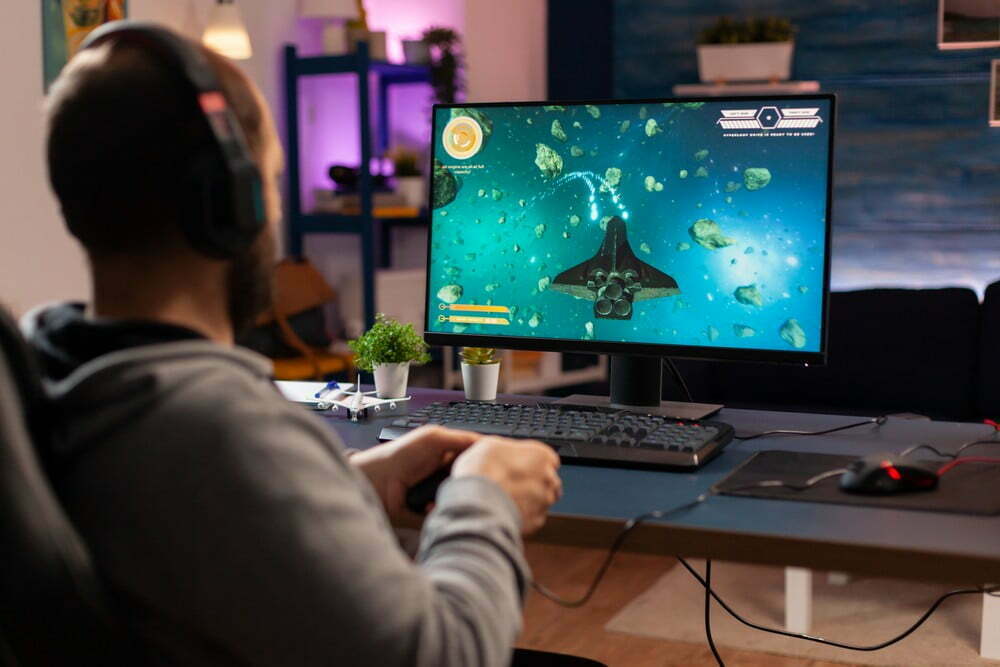




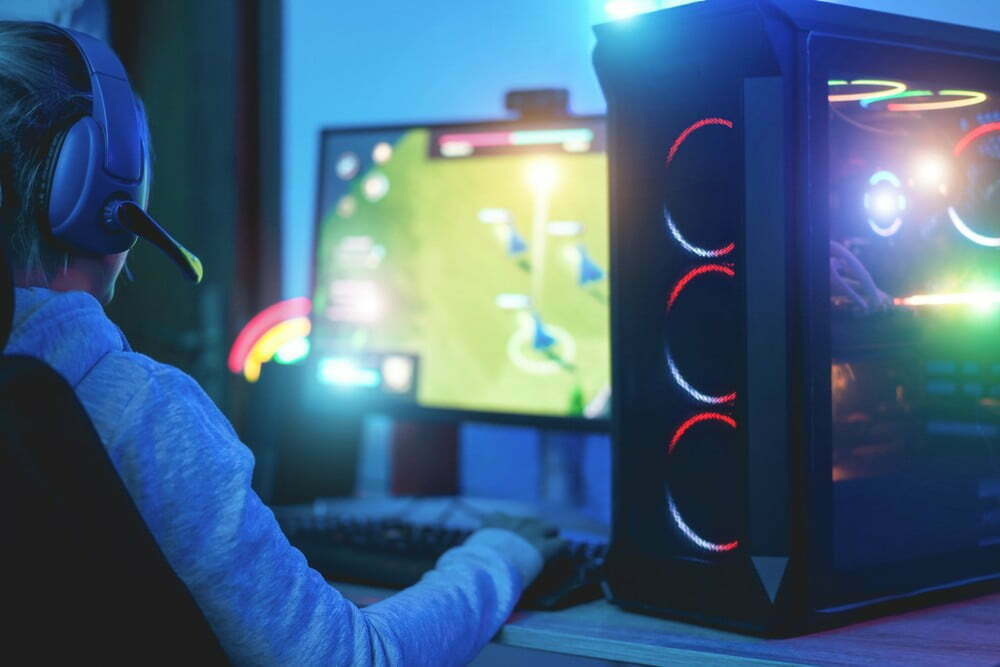
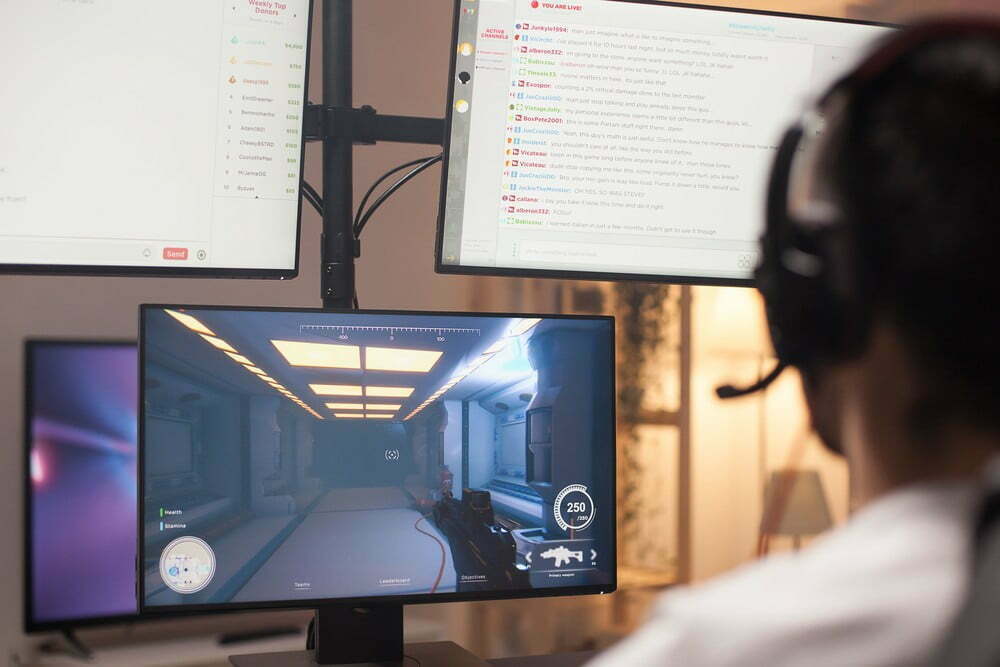
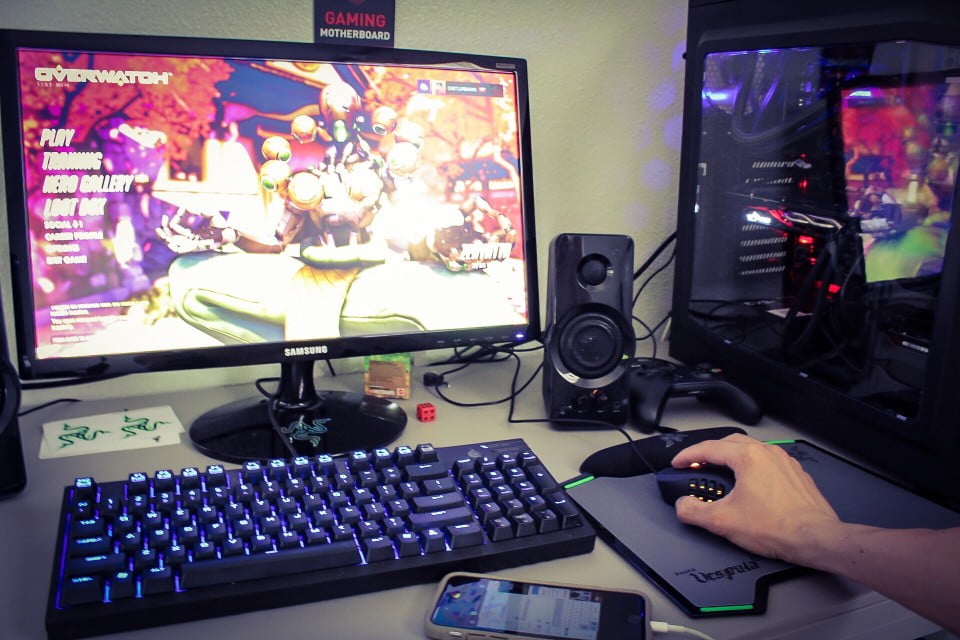

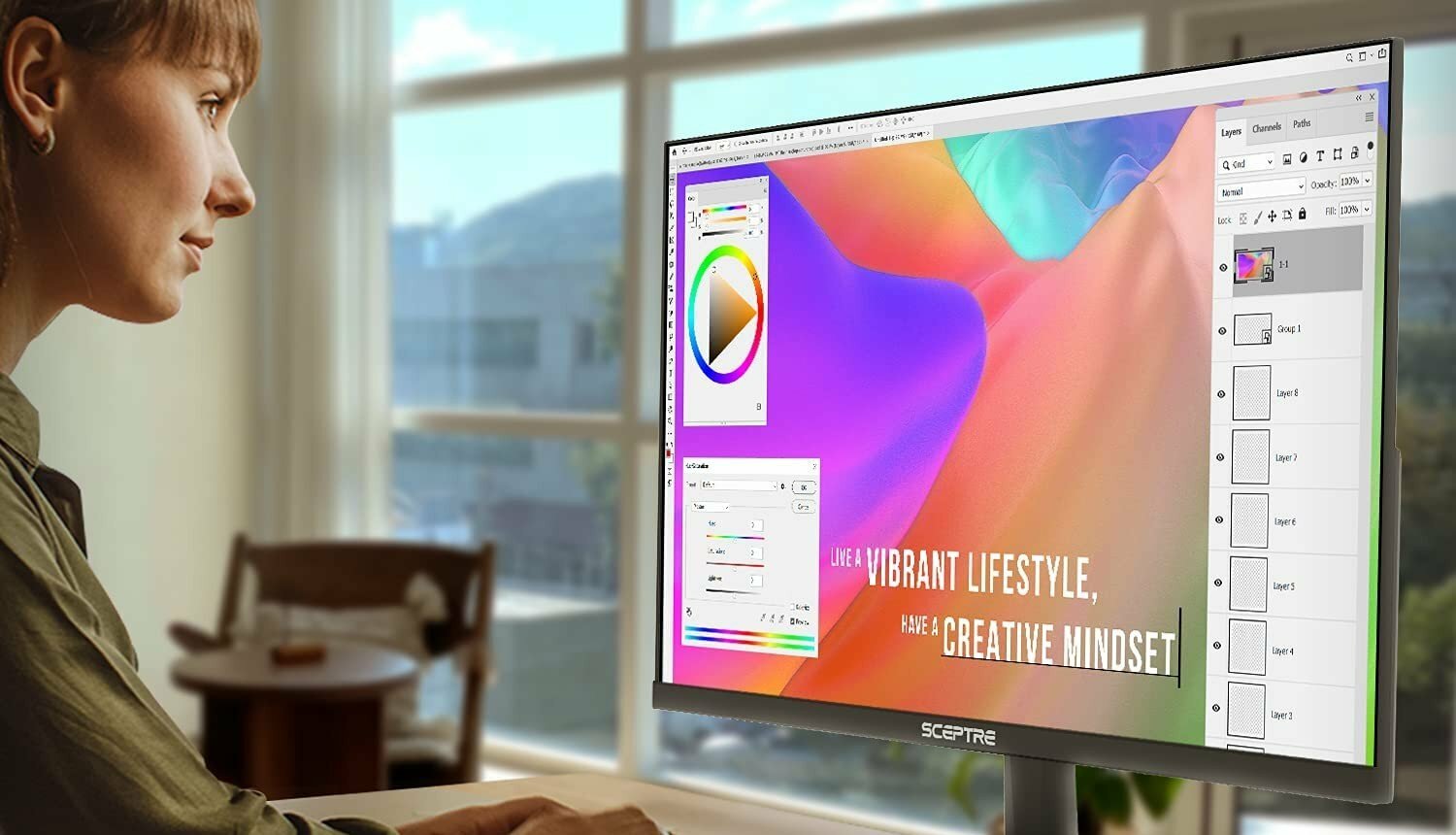


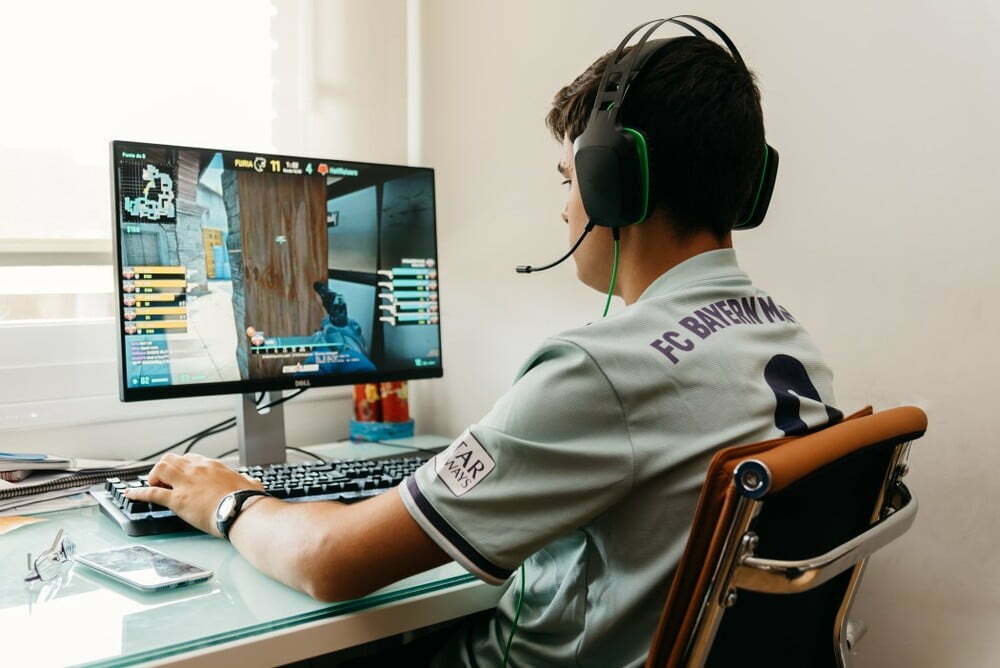
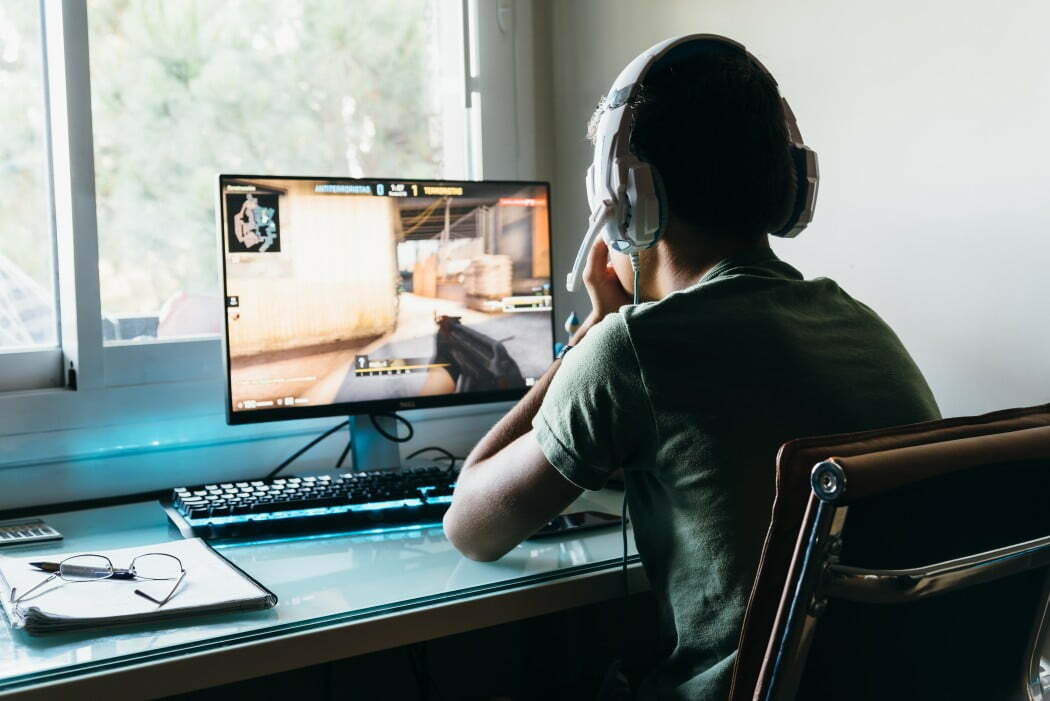
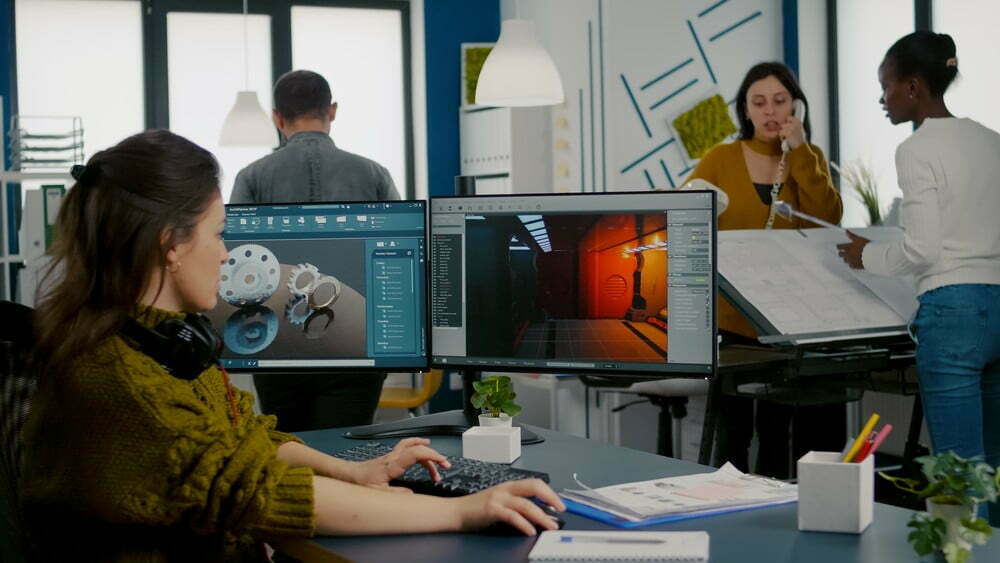
![Best 27 Inch Computer Monitor in [year] 33 Best 27 Inch Computer Monitor in 2025](https://www.gadgetreview.dev/wp-content/uploads/how-to-buy-the-best-computer-monitor.jpg)
![Best BenQ Monitors in [year] 34 Best BenQ Monitors in 2025](https://www.gadgetreview.dev/wp-content/uploads/best-benq-monitor-image.jpg)
![Best ASUS Monitors in [year] 35 Best ASUS Monitors in 2025](https://www.gadgetreview.dev/wp-content/uploads/best-asus-monitor-image.jpg)
![Best Dell Monitors in [year] 36 Best Dell Monitors in 2025](https://www.gadgetreview.dev/wp-content/uploads/best-dell-monitor-image.jpg)
![Best HP Monitors in [year] 37 Best HP Monitors in 2025](https://www.gadgetreview.dev/wp-content/uploads/best-hp-monitor-image.jpg)
![Best Lenovo Monitors in [year] 38 Best Lenovo Monitors in 2025](https://www.gadgetreview.dev/wp-content/uploads/best-lenovo-monitor-image.jpg)
![Best ViewSonic Monitors in [year] 39 Best ViewSonic Monitors in 2025](https://www.gadgetreview.dev/wp-content/uploads/best-viewsonic-monitor-image.jpg)
![Best Gigabyte Monitors in [year] 40 Best Gigabyte Monitors in 2025](https://www.gadgetreview.dev/wp-content/uploads/best-gigabyte-monitor-image.jpg)
![Best Monitors for PS4 Pro Gaming in [year] 41 Best Monitors for PS4 Pro Gaming in 2025](https://www.gadgetreview.dev/wp-content/uploads/best-monitors-for-ps4-pro-image.jpg)
![Best Monitor for Xbox Series X in [year] 42 Best Monitor for Xbox Series X in 2025](https://www.gadgetreview.dev/wp-content/uploads/best-monitor-for-xbox-series-x-image.jpg)
![Best Acer Monitors in [year] 43 Best Acer Monitors in 2025](https://www.gadgetreview.dev/wp-content/uploads/best-acer-monitor-image.jpg)
![Best MSI Monitors in [year] 44 Best MSI Monitors in 2025](https://www.gadgetreview.dev/wp-content/uploads/best-msi-monitor-image.jpg)
![Best SAMSUNG Monitors in [year] 45 Best SAMSUNG Monitors in 2025](https://www.gadgetreview.dev/wp-content/uploads/best-samsung-monitor-image.jpg)
![Best LG Monitors in [year] 46 Best LG Monitors in 2025](https://www.gadgetreview.dev/wp-content/uploads/best-lg-monitor-image.jpg)
![Best AOC Monitors in [year] 47 Best AOC Monitors in 2025](https://www.gadgetreview.dev/wp-content/uploads/best-aoc-monitor-image.jpg)
![Best Philips Monitors in [year] 48 Best Philips Monitors in 2025](https://www.gadgetreview.dev/wp-content/uploads/best-philips-monitors-image.jpg)
![Best Monitors For PUBG in [year] 49 Best Monitors For PUBG in 2025](https://www.gadgetreview.dev/wp-content/uploads/best-monitor-for-pubg-image.jpg)
![Best Stream Decks in [year] 50 Best Stream Decks in 2025](https://www.gadgetreview.dev/wp-content/uploads/best-stream-deck-image.jpg)
![Best Monitors for Streaming in [year] 51 Best Monitors for Streaming in 2025](https://www.gadgetreview.dev/wp-content/uploads/best-monitor-for-streaming-image.jpg)
![Best Monitors For Flight Simulator in [year] 52 Best Monitors For Flight Simulator in 2025](https://www.gadgetreview.dev/wp-content/uploads/best-monitor-for-flight-simulator-image.jpg)



















